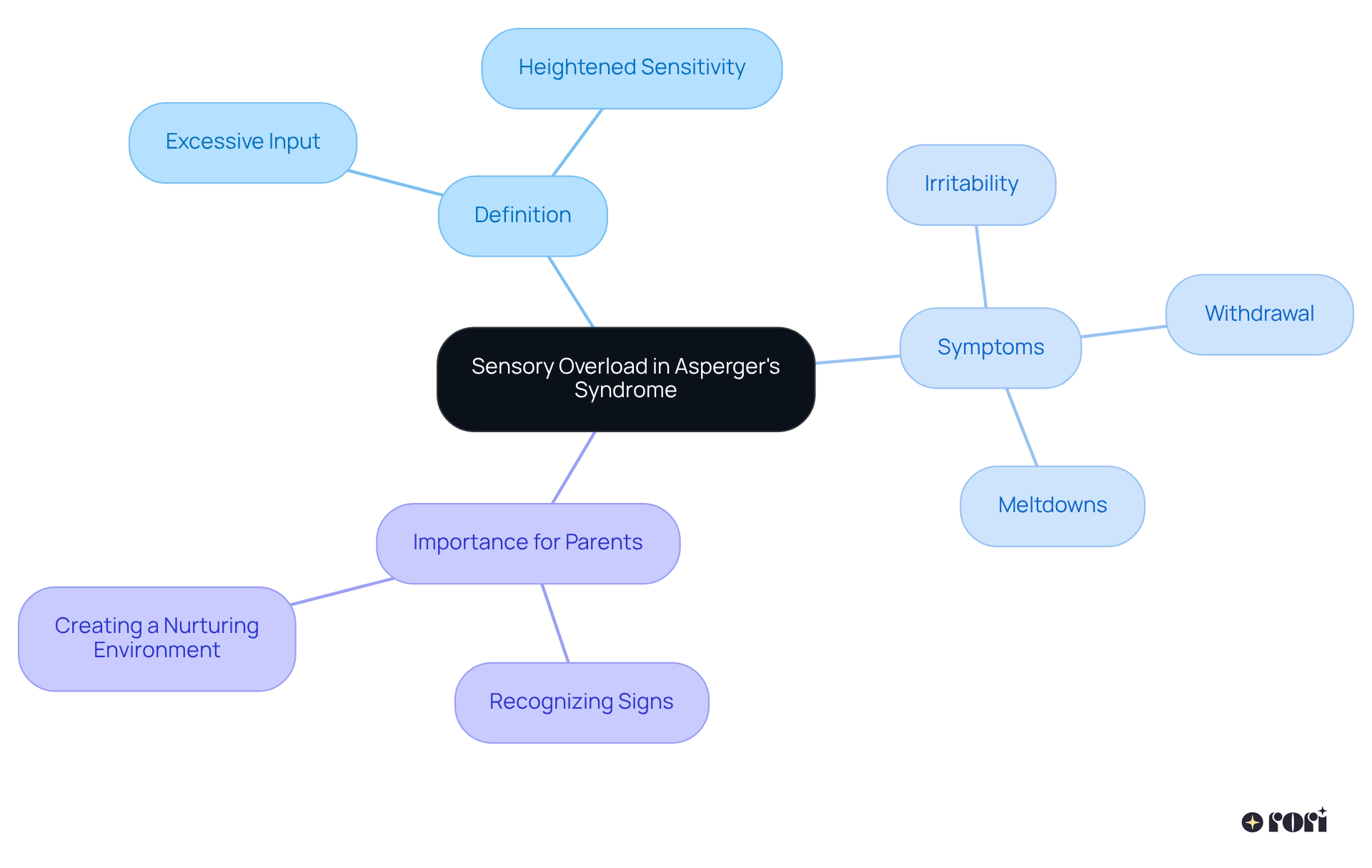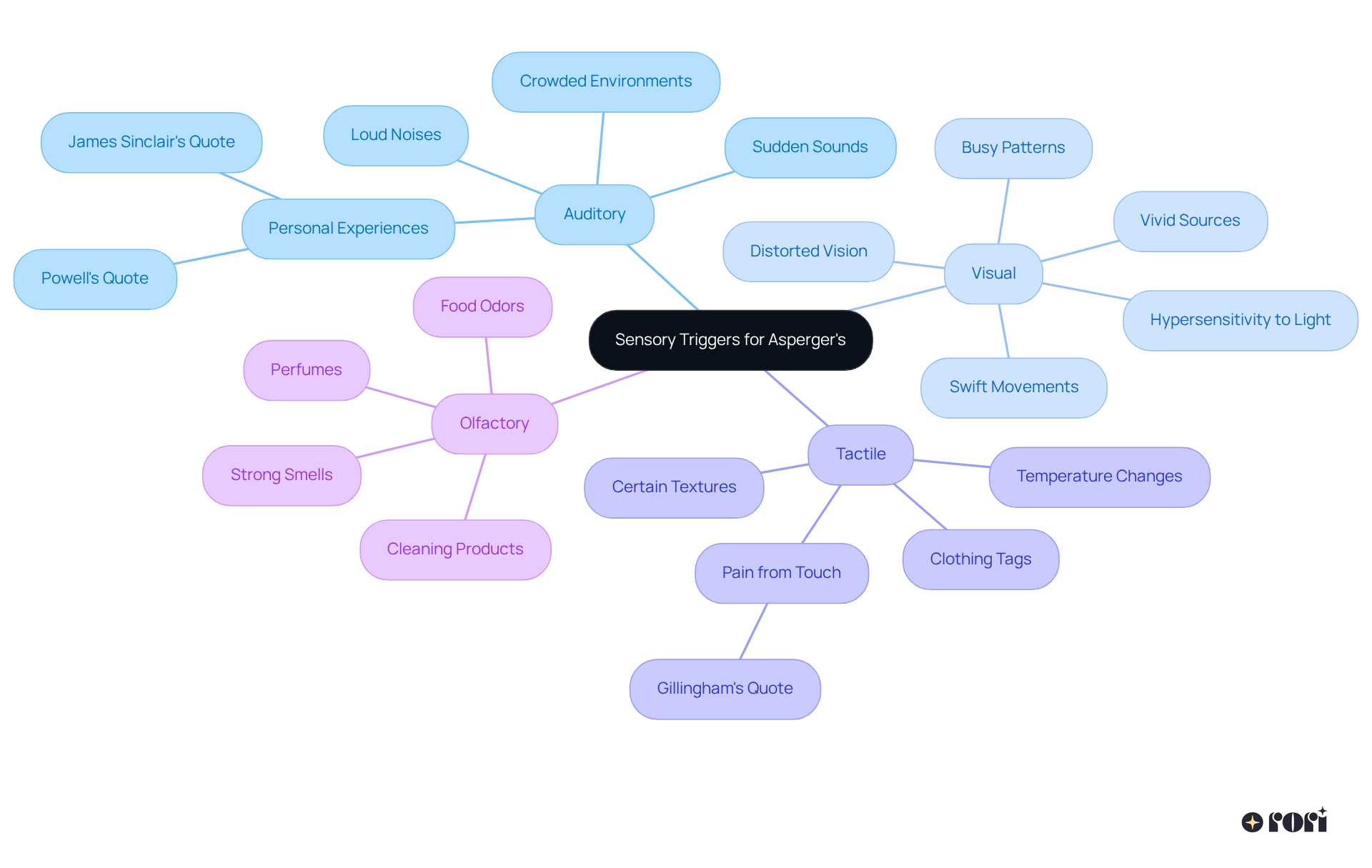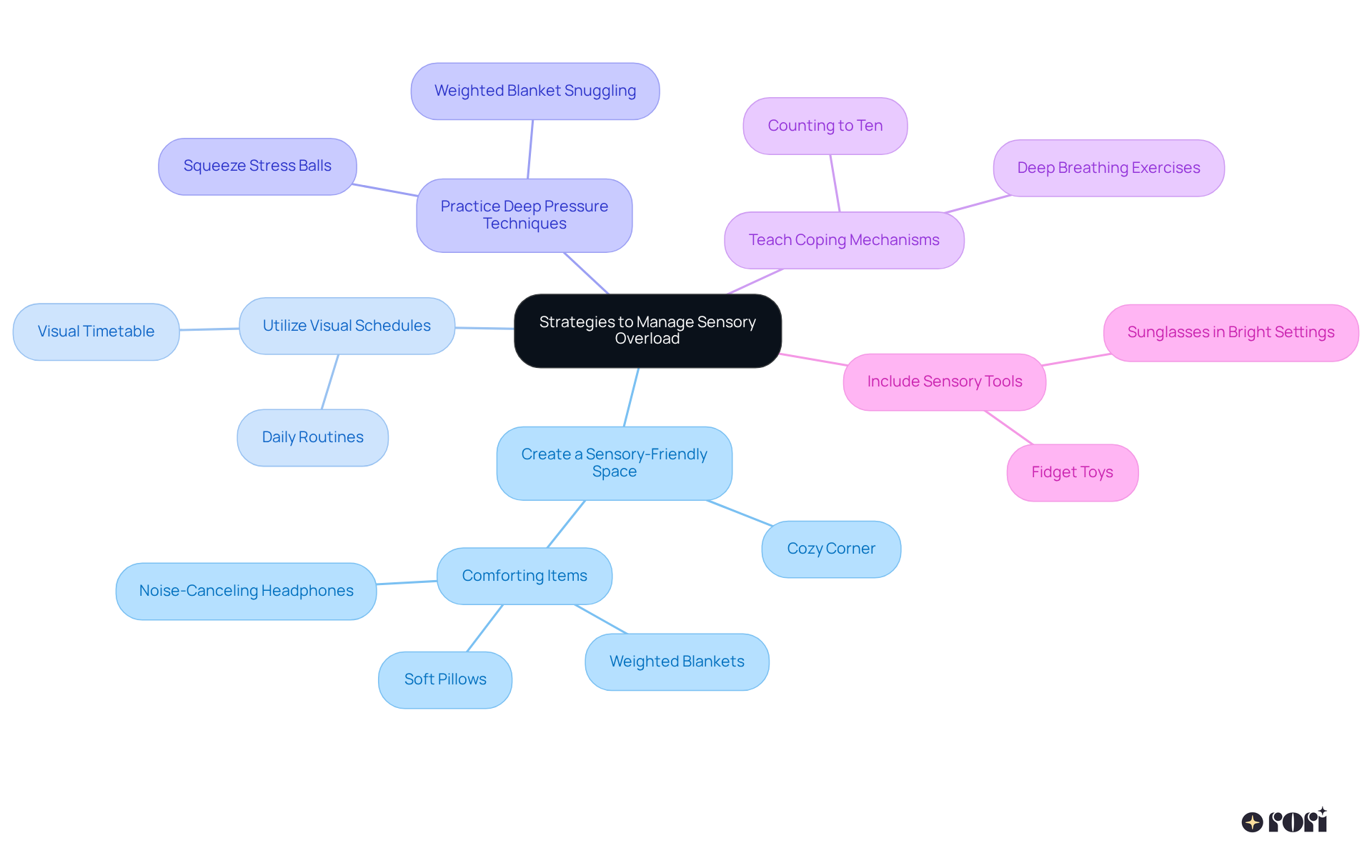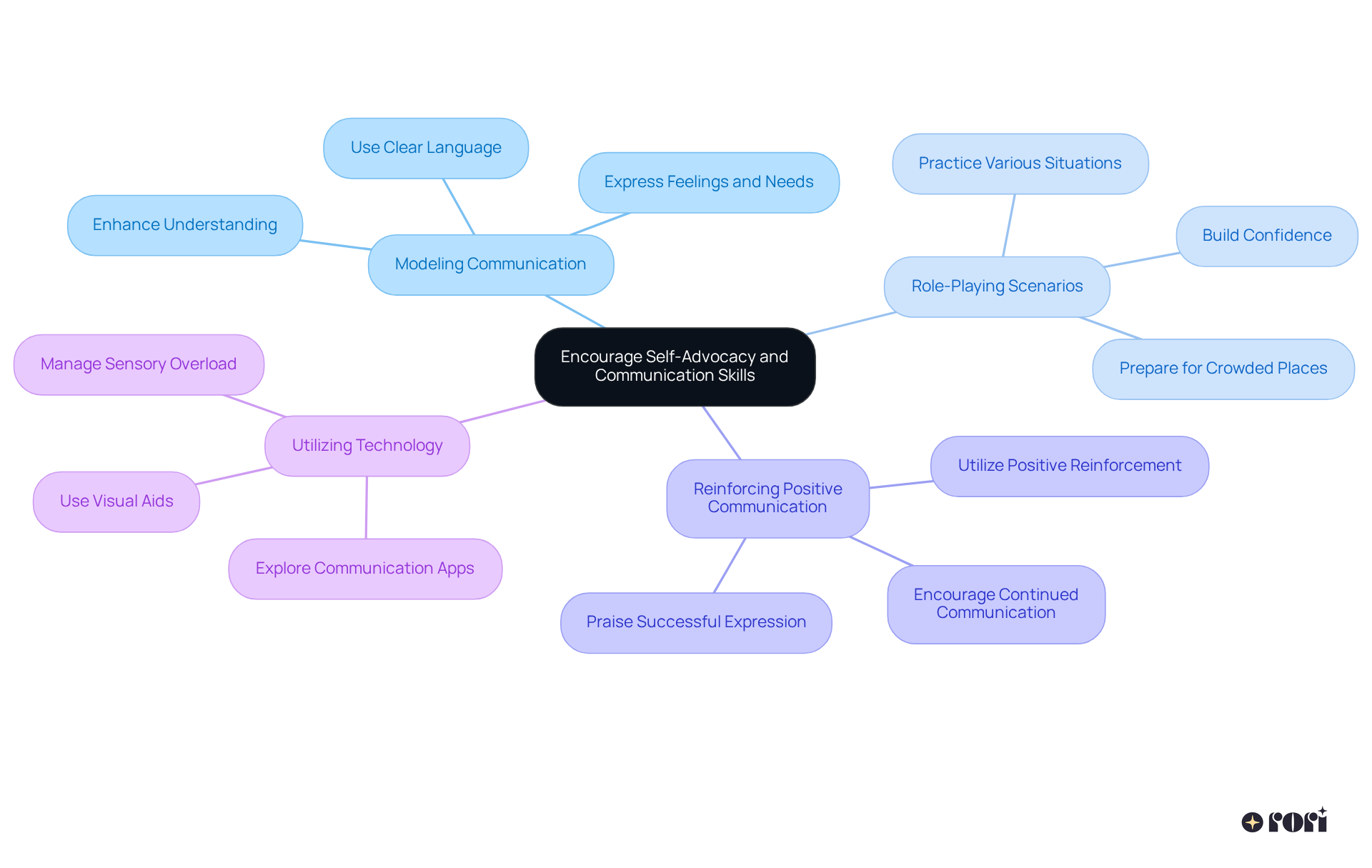Understanding Asperger's sensory overload is so important for parents! It involves an overwhelming amount of sensory input that can lead to anxiety and discomfort for children with Asperger's Syndrome. In this article, we’ll explore common sensory triggers that many kids face and share some practical strategies to help you support your child.
Think about creating sensory-friendly spaces or teaching them coping mechanisms—these can really make a difference in managing those overwhelming experiences. Let’s explore this together!
Understanding sensory overload in children with Asperger's Syndrome is so important for creating a supportive environment. As parents, navigating the complexities of heightened sensitivities can feel overwhelming, but gaining insights into effective strategies can truly make a difference in easing your child's distress. With so many sensory triggers out there and the emotional toll they can take, you might wonder: how can you best equip yourself to recognize and manage these challenges? Let’s explore this together!
Excessive input occurs when the brain receives more stimuli than it can manage, leading to feelings of anxiety, discomfort, or distress. For youngsters with Asperger's Syndrome, this might present as Asperger's sensory overload, characterized by heightened sensitivity to sounds, lights, textures, or other stimuli. Understanding this phenomenon is crucial for parents, as it helps them recognize when their child with Asperger's is experiencing sensory overload and respond appropriately.
You might notice symptoms like:
These can be overwhelming for both the child and their caregivers. Identifying these signals is the first step in creating a nurturing environment for your little one. Let’s explore this together and find ways to support each other on this journey!

Common sensory triggers for children experiencing Asperger's sensory overload can vary significantly, often showing up in several key areas.
Auditory stimuli: Loud noises, sudden sounds, or crowded environments can lead to overwhelming experiences. For instance, James Sinclair describes how even a single noise can disrupt his focus, illustrating the profound impact of Asperger's sensory overload on his daily life. Sarah Hope also shares her sensitivity to sensory stimuli, noting that it can be difficult in many aspects of life.
Visual stimuli: Vivid sources, busy patterns, or swift movements may cause discomfort. Many autistic individuals report hypersensitivity to specific wavelengths, such as LED or fluorescent sources, which can be physically and emotionally draining. Some individuals may experience distorted vision where objects and bright sources seem to move unexpectedly.
Tactile stimuli: Certain textures, clothing tags, or temperature changes can provoke strong reactions. Some youngsters may reject certain clothing pieces because of discomfort, while others might feel pain from gentle touches, resulting in avoidance behaviors. Frequent touching of others or playing rough can occur during sensory issues, highlighting the need for understanding.
Olfactory stimuli: Strong smells from food, cleaning products, or perfumes can be distressing. Autistic individuals may have varying sensitivities, with some being completely unaware of certain odors, while others find even mild scents overwhelming.
By identifying these triggers, parents can take proactive steps to minimize exposure and address Asperger's sensory overload, creating a more comfortable environment for their child. Implementing accommodations, such as using light covers, wearing sunglasses under fluorescent lights, or providing sensory-friendly clothing, can significantly enhance their ability to learn and socialize effectively.
Furthermore, recognizing that some autistic individuals might partake in actions such as chewing on non-food items, referred to as pica, can assist parents in addressing these needs more effectively. Let’s explore this together and find the best strategies for your child!

Managing aspergers sensory overload can be a challenge for parents, but there are several friendly strategies you can adopt to help your child navigate these situations.
Create a sensory-friendly space: Think about designating a cozy corner in your home where your child can retreat when things feel a bit too much. This space should be free from overwhelming stimuli and filled with comforting items like soft pillows, weighted blankets, or even noise-canceling headphones. It’s all about giving them a safe haven to regain their composure.
Utilize visual schedules: Visual aids can be a lifesaver! They help kids anticipate changes in their environment, which can ease anxiety. A clear visual timetable brings organization and consistency—especially beneficial for children with Asperger's—helping them manage their daily routines with a bit more confidence.
Practice deep pressure techniques: Engaging in activities like squeezing a stress ball or snuggling under a weighted blanket can provide soothing tactile input. These techniques are fantastic for helping children self-regulate their sensory experiences and feel more secure.
Teach coping mechanisms: Encourage your little one to share their feelings and develop their own strategies for handling overwhelming moments. Simple methods like deep breathing exercises or counting to ten can empower them to regain control when anxiety starts to creep in.
Include sensory tools: For instance, using sunglasses in bright settings can really help kids manage sensory stress.
By incorporating these strategies, you can significantly enhance your child’s ability to cope with aspergers sensory overload, fostering a more nurturing and empathetic home environment. Did you know that up to 90% of children with autism experience some form of processing disorder? This highlights just how crucial these strategies can be! As educator David Boehme wisely points out, 'For many autistic individuals, any unforeseen touch is distressing.' This underscores the importance of approaching sensory interactions with care and thoughtfulness.
Let’s explore this together! We’re here to help you every step of the way!

Promoting self-advocacy and communication abilities is so important for youngsters with Asperger's! Parents can play a key role in this development through several effective strategies:
Utilizing technology, explore apps and tools designed to help young individuals express their feelings and manage Asperger's sensory overload. These resources can provide extra support and engagement. For instance, using visual aids or communication apps can help kids express their emotions more effectively.
By nurturing these skills, parents empower their children to advocate for themselves, leading to better coping strategies and overall well-being. Did you know the average age of autism diagnosis in the U.S. is just 5 years? This really underscores the importance of early intervention in developing these essential communication skills. Let’s explore this together!

Understanding Asperger's sensory overload is essential for parents who want to create a supportive environment for their children. By recognizing the unique challenges of sensory overload, caregivers can respond more effectively to their child's needs and foster a sense of security. This awareness not only helps in spotting when a child feels overwhelmed but also empowers parents to take proactive steps to ease distress.
Throughout this article, we’ve explored various aspects of sensory overload, including its definition, common triggers, and effective strategies for managing these experiences. We highlighted the importance of creating sensory-friendly spaces, using visual schedules, and teaching coping mechanisms. Plus, we emphasized the role of self-advocacy and communication skills as vital tools for helping children navigate their sensory experiences.
Ultimately, supporting a child with Asperger's is a journey that requires patience, understanding, and the right tools. By implementing the strategies we discussed, parents can significantly enhance their child's ability to cope with sensory overload, improving their overall quality of life. It’s crucial to stay engaged and informed, as these efforts not only help in immediate situations but also lay the groundwork for long-term emotional resilience and self-advocacy.
Let’s explore this together! We’re here to help you every step of the way!
What is sensory overload in Asperger's Syndrome?
Sensory overload in Asperger's Syndrome occurs when the brain receives more stimuli than it can manage, leading to feelings of anxiety, discomfort, or distress.
What are the characteristics of Asperger's sensory overload?
Asperger's sensory overload is characterized by heightened sensitivity to sounds, lights, textures, or other stimuli.
Why is it important for parents to understand sensory overload in children with Asperger's?
Understanding sensory overload is crucial for parents as it helps them recognize when their child is experiencing it and respond appropriately.
What symptoms might indicate a child with Asperger's is experiencing sensory overload?
Symptoms may include irritability, withdrawal, and meltdowns.
How can caregivers support children experiencing sensory overload?
Identifying the signals of sensory overload is the first step in creating a nurturing environment for the child.